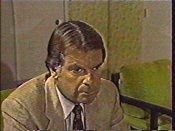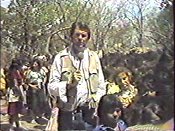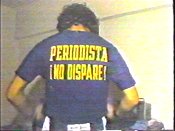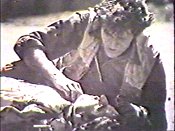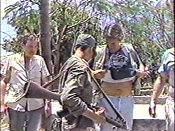 |  |  |  |  |
 | ||||
Stan Remembers: Dangerous days covering El Salvador
Reporter: Stan Atkinson Photographers: KOVR 13 News, KCRA News Almost as soon as the United States got out of Vietnam, we were embroiled in yet another foreign civil war: this time in central America. And once again, I was on the road as KCRA sent me to bring home the story to northern Californians. Stan Atkinson: The three-sided war in El Salvador was complicated, bloody and - at the time that I first visited in 1981 - appeared to have no end in sight.
The images coming out of El Salvador shocked Americans. Slain nuns targeted by right wing death squads, who suspected anyone who helped the poor of being a communist. American labor lawyers, gunned down after helping peasants take back their land. Sick, hungry refugees on the run from the government's runaway military and the communist-backed guerillas. And at the center of it all, this man: Jose Napolean Duarte, a moderate trying to bring order back to his country. When Duarte came to San Francisco, having covered the conflict in his country, I landed a one-on-one interview with him for KCRA. Stan Atkinson: "The Americans see the government as part of the military, and military has created abuses and killed people indiscriminately. Thus the American people see the government people as evil."
Jose Napolean Duarte: "That's why I'm here. I wanted to talk to the American people and explain that the information they have about El Salvador is confusing. It's not the truth." The truth was the country was in chaos, and like it or not, Duarte and his moderate Junta was it's best hope for peace. When I visited in El Salvador in 1981, I learned there was a strange rhythm to the war. There were indiscriminate killings in broad daylight, six days a week. But on the seventh day, all sides rested. The leftist guerillas, the right-wing death squads and the people caught in the middle. It wasn't unusual for people from all those groups to gather side-by-side for Sunday outings in the park. Truly bizarre.
Another ritual, the 7:00 bombing. Every night, the guerillas picked a target in a city to bomb. Banks were the favorite target, by far. We foreign journalists had our little rituals as well, and they centered around not getting killed. Bulletproof vests, T-shirts proclaiming: "Press, don't shoot!" And competitors or not, we traveled together in as many vehicles as possible. That way, if the lead vehicle hit a landmine, there would be plenty of other transportation to get the wounded out. Some journalists never made it home. Captured in a photograph, Time magazine photographer Harry Mattison cradled a colleague from Newsweek as he lay dying. Olivier Ribeau was shot as he and Mattison walked the streets of a deserted town. When we teamed up with some West German journalists to visit the deserted town of San Lorenzo, we almost met the same fate.
Stan Atkinson: "The guerillas order us to leave, and then as we start to, they tell us to get back into our vans with our hands up." Turning the camera on to shoot secretly what would now take place, Channel 3 photographer Gilbert Rios expresses our mutual sentiment: Gilbert Rios: "They want us to come out. I feel very uneasy." Stan Atkinson: "The host of our shakedown is 12-years-old. His senior comrades are giving him his head, a test - as it were - to see how he'll perform. He does just fine." My feeling at the time: this is a young boy, but that's a big cannon he's holding. The kid extracted $100 from my pocket, but there was something I wanted back. And somehow I found the courage to ask for it: my sentimental money clip. Finally, we were allowed to leave, but not before a very thorough search of our van for the weapons the guerillas thought we had. Back to top of the page Back to the Stan Atkinson page |
News Scripts News Team Question of the Day Sites & Links
Stan Remembers: Saddam out of control, Kuwait in flames Stan Remembers: Father Hoa and his little army Stan Remembers: On the road with LBJ Stan Remembers: Way news is covered has changed since the Donner Ridge forest fire Stan Remembers: Interview with the madman, Charles Manson Stan Remembers: 1977 Cuba a mixture of heaven and hell Stan Remembers: Vietnam and BT Collins, fates intertwined Stan Remembers: The tragedy in Cambodia Stan Remembers: Sometimes covering the news risks your safety
6 am Daybreak News at Noon News at 5:00 News at 6:00 THE 10:00 News Saturday 5:00 Saturday 11:00 Sunday 6:30 Sunday 11:00 |
 | ||||
